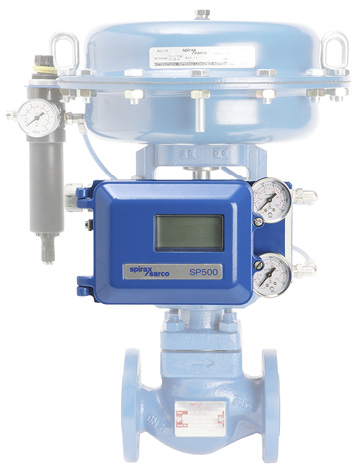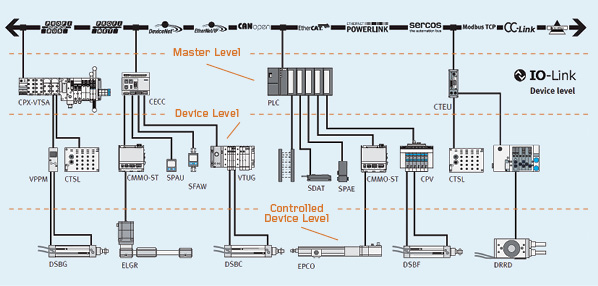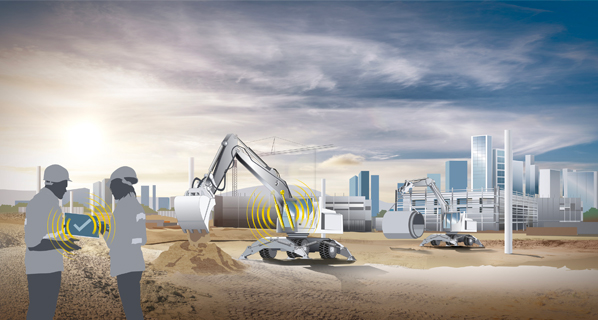Upskilling in Fluid Power

By Ian J. Ford, Senior Product Manager, CFC Industrial Training.
Why We Work
“What gets you out of bed in the morning?” Let’s face it, this question is a cliché and veiled attempt at finding out what motivates us. What really gets us out of bed? Our jobs. By the sweat of our brow, we exchange physical labor and mental acumen for our pay. Though the snooze button is a stalwart ally, we need to work. It is necessary – and meeting that necessity is good for us, good for our families, good for our communities. The abilities each of us possess can contribute to net gains. Those productive gains can extend far beyond the web of our own relationships. Even the mundanity of button-pushing, is a noble effort if done with the right attitude and sense of purpose. The simplest of tasks can have meaning and contribute to the sum of human enterprise. We get out of bed to do good work.
Our work must be effective though. If you are button-pushing on a machine that is off, what does that avail? The more capable we are and the more skills we have, the more valuable our work. Not just for our own sense of purpose, edification, and satisfaction; but also, for the positive effect one’s skilled labor can provide for an employer, organization, or community. A skilled workforce is perhaps the most valuable asset an organization can have. One could argue, competent employees outweigh equipment, intellectual property, and even capital as a strategic asset. We often see this exemplified in dramatic stock market swings when key employees depart a publicly traded company. This may make one think, “Would I cause a stock market swing if I depart?”. You may laugh at such a ponderance, but if it is asked with humility and sincerity, what an excellent and introspective self-enquiry! Does my work really make a difference? Am I satisfied with what I can contribute? Do the people I work with and for value my work?
Fluid Power is Everywhere
Let us consider the pervasiveness of fluid power in the workplace. It is next to impossible to think of a good, commodity, supply chain, utility, or nearly any form of production or service that does not utilize the ‘power’ of fluid power. From the county fair to the dump truck, the mega-stadium to the steel mill; the humming hero that is an HPU is energizing a tried-and-true technology that serves as the workhorse of manufacturing and so many other applications. You name the sector, fluid power is there, and usually in no small capacity. Somewhere along the line, fluid power is a tool we use to get the job done. However, it takes a competent team to keep that workhorse running full-bore. As such, the fluid power professional is an integral member of many operations’ workforce.
Is the Average Hire Competent in Fluid Power?
Despite the overwhelming prevalence of fluid power, to many seasoned mechanics, it remains a ‘dark art’ (forgive the diabolical term). A task as simple as changing a hydraulic hose, for example, requires adherence to some important best-practices. As of July 2023, the ASE (The National Institute of Automotive Service Excellence) had 221,933 individuals with some degree of certification. As of this writing, the International Fluid Power Society (IFPS) has 5,581 individuals with some degree of certification. This is not to make an apples-to-apples comparison in certification, these are different disciplines indeed. Rather, we see that although almost a quarter million individuals can be considered certified mechanics or technicians, their capabilities with hydraulic or pneumatic componentry and systems cannot be verified. Conversely, of course, the IFPS-certified individuals provide great confidence to an employer or organization that they have at least some degree of fluid power knowledge and capability. With the aforementioned prevalence of fluid power in industry, this perhaps illustrates the rarity of readily hirable fluid power professionals.
Fluid Power Skills Gap
Many candidates for the industrial workforce may consider themselves mechanics, or in some capacity may even be certified as such. However, when it comes to fluid power componentry, equipment, and systems, these prospects and new hires are often confronted with an unexpected skills gap. The unique physics involved in fluid mechanics are not exceedingly complex in concept, but they are much less known. Do you recall learning about simple machines in elementary school? Screws, levers, pulleys? Do you recall in high school studying Ohm’s Law? Working with a multimeter in shop class or a lab? Or even simply studying static electricity, grounding, and other fundamental electrical concepts? What about Pascal’s Law though? Perhaps you were exposed to fluid mechanics, and hopefully so. It is likely though, that fluid power was exemplified seldomly as a method of power transmission. This is the crux of the matter: new hires, and often many seasoned technicians and maintenance personnel, are deficient in core fluid power concepts and best-practices.
The workforce should be the most valuable asset to an organization. When it is not, it is usually due to size or lack of capability, and the ramifications can be painful. On-the-job training or ‘upskilling’ becomes imperative, and the return on investment and time-spent is invaluable to productivity. The fluid power professional becomes just that with training. Whether you are an individual looking for a job, or an organization needing to improve employee proficiency and bring new hires up to speed, the skills gap must be bridged. Obtaining the qualifications needed to contribute as a worker with aptitude is simply essential. We train for safety. We train for productivity. We train for efficiency. We train for the bottom line.
For Safety
Contrary to the old adage, “ignorance is bliss”, when it comes to working with heavy machinery and powerful hydraulic systems, “ignorance is dangerous”. If for no other reason, familiarity with how fluid power systems behave is integral from a safety standpoint. Even when power is seemingly removed from a system – motors off, pumps off, valves deenergized; trapped pressures can still be present. A generic shop safety class rarely touches on the nuances of hydraulic and pneumatic systems. Asphyxiation, injection injuries, lock-out/tag-out – all important topics. What about outrigger cylinders on a hot summer day? Or utilizing accumulators for emergency power? Even basic familiarity with fluid mechanics and the various componentry in a fluid power circuit puts a technician in a safer situation. The more one understands about the system, the less likely an accident occurs.
For Productivity and Efficiency
If “knowing is half the battle”, the battle is half-won with proper fluid power skills training. Hydraulic systems are extremely robust, powerful, and can be quite efficient. Maintaining them in peak operating condition requires a knowledgeable team. Fluid cleanliness, leak prevention, proper replacement and installation of conductors and connectors; are just some of the most basic items on a maintenance check list. Proper sizing and installation of wear items such as filters and changing them at the proper intervals is a simple first-line defense against very preventable issues in a system. If a task as simple as this is neglected or performed improperly, productivity can drop. An easily combatted problem such as fluid contamination can lead to defective part production, slower cycle times, wasted material, increased power consumption, amongst other costly and deleterious effects on whatever job one is trying to accomplish. If a maintenance technician of 5 years has faithfully replaced the 10 micron filter with a 10 micron element that has a Beta ratio of 20, when it really needed to be 200; that may be the cause of significant issues in the system. It doesn’t matter how fastidious the technician was in performing the task at regular intervals, the element was wrong. The consequences in productivity and efficiency over the years were probably severe, but entirely avertible. Even the best employees can cause costly problems in a hydraulic system if not armed with a bit of knowledge.
For the Bottom Line
Do we dare extrapolate the cost of improper equipment maintenance and operation? Ultimately, skill gaps are expensive. When confronted with downtime or ‘wrench time’, an inoperable system is not contributing to whatever work needs to be done. Let us consider some possible scenarios. Building upon an example of contamination due to improper filter specification, imagine that the contamination damaged a piston pump beyond repair. A pricey replacement. Perhaps the pump is obsolete, and the original manufacturer is out of business. Now the team must also specify an adequate replacement. Does the team have the ability to type and cross the old pump with a modern one? The lead time on new componentry in today’s day in age, can be frustratingly drawn-out. Then take into consideration what is necessary to properly start-up the retrofitted system. What if downstream equipment encounters problems? The team replaces an entire solenoid-operated directional control valve to later find the cabling for the command signal had been severed amidst the retrofit work. Improper troubleshooting can be extremely costly, especially when the stress of an inoperable system is looming overhead. Throwing money at swapping out components is seldom the answer. Just as blindly turning adjustment knobs to get the machine to ‘just work’ is naïve and dangerous. A trained fluid power professional knows how to specify and install replacement components. They know to inspect seals and O-rings, to torque bolts properly, and so many small and simple practices that can prevent much grief and expense. They know to maintain and reference pertinent documentation on components, and the system as a whole. Skills training, even for two or three days, can instill core concepts that remain long after.
Hands-On Skills Training
Fluid power skills training is the sure-fire way to bolster the workforce. If we are to contribute and have meaning in our day-to-day – competency is key. Hydraulic training is best taught hands-on, just as it would be encountered in the real world. Concepts such as pressure vs. flow ‘click’ when exemplified in a demo circuit. Examining take-apart and cut-away components reveal the inner workings of parts and aids in the understanding of their operation. It also easily displays areas potentially affected by wear and/or contamination. Hands-on labs can illustrate concepts such as Sequence Circuits, Meter-In/Meter-Out, and Accumulator Power; preparing the worker for these operations in their own equipment. With determination, the fluid power student can progress from new hire to IFPS-certified in rapid fashion, all whilst on-the-job. Continuing education and ‘upskilling’ keeps the worker engaged in the industry, progressing in the workforce, and all-in-all a valuable contributor.
Education Technologies
In the modern workforce, especially when confronted with rapid turnover and the retirement of senior staffers, we must secure our access to essential information. Relying on the ‘tribal knowledge’ of a senior maintenance supervisor is precarious. As the wisdom of trained and experienced team members departs, often the remaining members are left with insufficient or nonexistent data. Documentation and information are essential. Incorrect or partial documentation is, perhaps, just as detrimental as none at all. Even skilled technicians can be adrift without accurate prints. So, capturing ‘tribal knowledge’ and reverse-engineering equipment becomes an essential part of continuing education. As new workers hire in, they can reference critical information quickly, and become familiarized with equipment faster than ever before. Documentation, photography, prints, video, all aid in capturing critical system data in a lasting way. The opportunity to continually learn and share crucial information with staff is an incredible advancement. The technology is readily available and should be utilized. Pairing such education technologies with hands-on training is all the more advantageous, and a scheduled learning and development program can be formed to upskill workers.
Empowering the Fluid Power Workforce
Learning and development is often an afterthought. When the going gets tough, a worker reflectively looks for modes of improvement. A company may reactively train a team when a deficiency in personnel appears. However, training should be thought of as an investment, and a comprehensive learning and development program leads to compounding interest on that most valuable asset; an empowered workforce. We must view training and education as a tool for advancement, not remediation.
If we want our work to be more than a paycheck. If we want our team members to be more than automatons. Each of us must strive to improve ourselves. We can continually grow as fluid power professionals; collaborating to most effectively wield the awesome technology that is fluid power. When we then turn in after a hard day’s work (or a hard day’s night for you third-shifters), do we feel accomplished? Did our work really do something, even if small? No matter how indirectly, did our job today contribute to our family and community? We who work in fluid power, from the new hire restocking a spill kit, to the senior engineer, should be able to confidently answer, “Yes, and tomorrow we will do all the better.”







